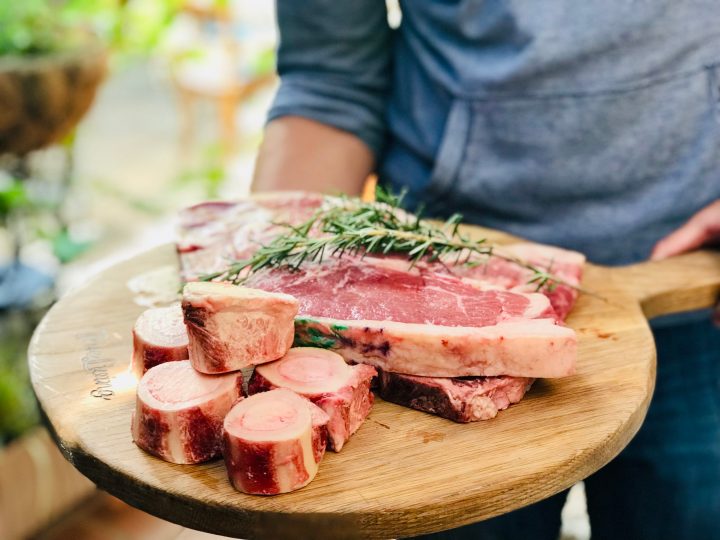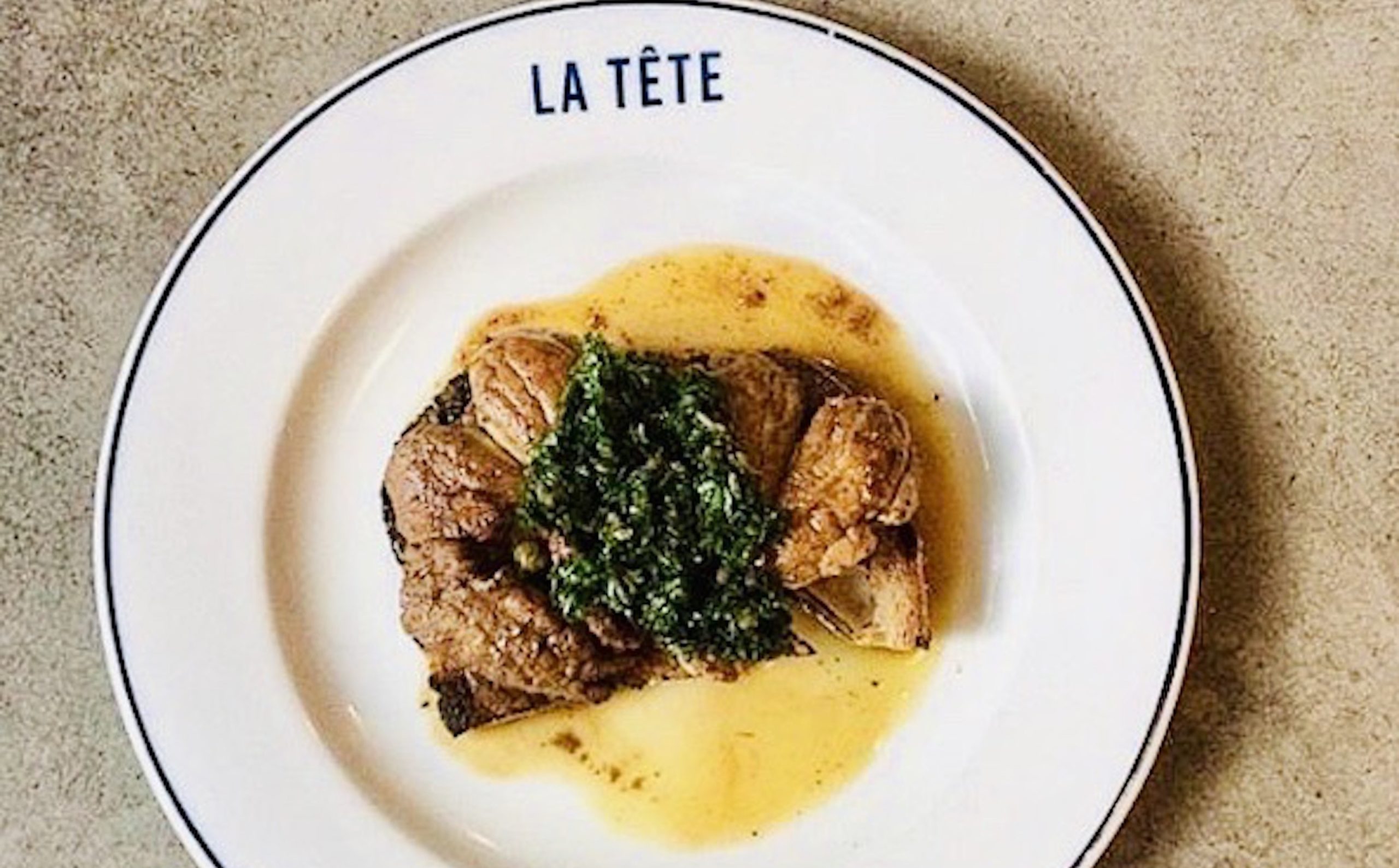FARM TO TABLE
Nose to Tail: A toast to the lesser-loved Fifth Quarter

Afval. Offal. Tripe. Synonyms for words like garbage, trash, rubbish. The word ‘offal’ even sounds like ‘awful’. What a shame. It’s no wonder many people curl their upper lip when the topic steers to this integral South African speciality.
You’re either an afval eater or you’re not. (I can already hear the afval lovers saying, “More for us!”) However, saying you don’t eat offal if you’re a hot-blooded South African meat-eater is simply untrue. “Afval”, in Afrikaans, refers to the rich and wholesome “pens en pootjies” stew of the same name. In a broader sense, however, the term offal refers to many parts of meat and poultry that sketch a holistic and wholesome picture of South Africa’s food culture.
Boerewors, for example, that heavenly blend of ground beef and spices, is stuffed in pig’s intestines. Washed and cleaned until translucent, intestinal tubes are a flavoursome, 100% natural and no-waste wrapper for South Africa’s favourite braai staple.
Then there’s oxtail. Technically offal, like skaapstertjies. And crackling. Or the marrow shucked and sucked from the bones of a good lamb knuckle stew. Speaking of oysters, how about braaied “skilpadjies”: those seasoned lamb liver morsels wrapped in caul fat we love to devour hot off the braai. I’m yet to meet a meat-lover who’d turn down a “Karoo Oyster”, as they’re also known.
The names for these interesting foods are as ingenious as the dishes themselves. Whole baked “skaapkop” is known as a Smiley, for obvious reasons. A combo of crispy fried chicken feet and heads – a more-ish delicacy in many takeaway establishments in the rural Eastern Cape – goes by the name “Walky Talky”.

The traditional way to cook a ‘Smiley’ – over the coals on a steady heat. This ‘skaapkop’ braai was hosted by Cradock’s legendary ‘Afval Guild’. (Photo: Arlo Slabbert, President of the Cradock Afval Guild)
There’s Kaiings, a traditional Platteland delicacy served over pap, made from small bits of internal fat. “Pofadder”, again, refers to the large intestine or “vetderm” of lamb or venison, stuffed with a mixture of seasoned ground liver, spices and sometimes cheese. It can also be curried. The dish gains its name from a South African snake of the same name, which it resembles after braaiing.
The list of South African offal classics is vast and present on many a South African table. There’s the Christmas staple beef tongue, typically served with sweet mustard. The Karoo breakfast classic of lamb’s liver pan-fried with onions in a sweet-and-sour sauce. Steak and kidney pie, made from beef kidneys and carefully baked in an all-butter crust, nods to our British colonial roots.

A traditional curried afval stew made from head, tripe and trotters and served on samp. (Photo: Elanie Lombard)
More recently we’ve seen bone marrow make a comeback. Now high-end steakhouses swop the Béarnaise for a royal-looking marrow bone to crown a perfectly cooked fillet of beef. It cleans up well, so to speak. But did you know that the same marrow found in that juicy bone is also the brains… more about that later.
Knowing how to utilise the less desirable parts of a slaughtered animal is the most resourceful and responsible approach one can have to food. Especially in a modern food system where resources are already stretched to the utmost, while wastefulness runs rife.
Simply put, cattle and lamb aren’t made of steaks and chops, and choosing only to consume these parts is wasteful.
Giles Edwards from the famed La Tetê in Bree Street, Cape Town, says the main reason why people are hesitant of offal is because of old-fashioned techniques and prejudices. “Many people have horrid memories of eating offal in boarding school. Oftentimes, cuts like liver and kidneys or tripe were boiled and braised until pale and grey, prepared with no real thought or respect for the actual product.”
La Tetê, literally meaning “The Head”, has shifted the perception away from those boarding school livers and pioneered the nose-to-tail movement in South Africa’s fine dining food scene.
Creating dishes that allow these ingredients to shine shows respect for the animals and for the farmers, Giles says. And people are starting to really appreciate the unique and diverse flavours of offal.
“Once you treat these cuts with the needed respect, it can be one of the finest foods to eat. It is varied. The flavours, so unique to each little bit of the animal, much more enjoyable than just a piece of steak. Prime lamb cuts, for example, all closely resemble one another whereas lamb liver has a far more delicate taste. Kidneys, again, are intense, but beautiful. Lamb heart, which is technically a muscle, is one of the best cuts of lean meat you can ever eat, with loads of flavour.”

Giles Edwards’ all-time favourite lamb brains on toast with green sauce, a highly sought-after La Tête speciality. (Photo: La Tête)
The health benefits also far outweigh their sexier counterparts, Giles says.
“Eating a lean piece of calf liver as opposed to a fatty steak is better in terms of iron content and flavour.” Nutritionally speaking, offal is far richer in certain vitamins, minerals, and forms of protein than typically muscle tissue meats like steak. Liver, for example, is a major dietary source of iron, and sweetbreads (from the pancreas or thymus) are considerably higher in the water-soluble protein albumin than any other parts of beef.
Giles’ all-time favourite offal dish to eat is lamb brains on toast. Creamy, buttery, delicious.
In my family recipe afval stew, they’re typically wrapped up in a piece of the stomach lining and cooked with the head, tripe and trotters. Whoever scoops it up as part of their serving is always the envy of the table as this morsel – a pocket of perfectly cooked bone marrow – is most delicious.
Xhosa food expert Ncumisa Dywili says lamb brains – known as “Ubuchopho” – are as highly revered in Xhosa culture, typically steamed in a bit of water with salt to highlight the pure, creamy taste. They’re eaten as is, no bread needed. As always, South Africa’s oldest food cultures are way ahead of the trend curve and no strangers to offal delicacies.
Still, brains are a big divider, less so than the better-known afval stew.
“Xhosa culture has always included all kinds of offal. Afval stew is a firm favourite, especially in winter,” Ncumisa says.
“In Xhosa culture, the entire process make up the cuisine – from the slaughtering, the preparation and cleaning of the raw offal, the cooking and finally, the eating.” The offal is usually prepared and cleaned around a large black pot of boiling water, set over a fire, Ncumisa explains. The water is used to soak the stomach lining in, which makes cleaning and scraping the tripe easier. The fire also heats long, steel irons that are used to scorch hairs from the head and trotters.
“Often, delicious bits like ears are braaied and eaten around the fire while prepping the rest of the offal,” Ncumisa says. There is nothing that goes to waste.
While Afrikaans cooks would always recommend a completely, almost overly-washed tripe, many Xhosa cooks prefer their afval stew made with a darker offal. “It doesn’t need to be washed and scraped beyond recognition,” Ncumisa says. “Some Xhosa cooks believe there is more flavour in an afval with more texture. It’s traditionally cooked only with salt and onions, topped with dumplings and served on samp.”
The Afrikaans “Vaal Afval” resembles this method, cooked only with salt and pepper and a little vinegar. There’s also a curried version, which is made with a sweet and mild curry paste and typically served on samp.
From beef offal comes curried brawn or “sult”; the processed version of afval stew, made by cutting up the pieces of tripe, trotters and extra beef shin in tiny pieces and then allowing it to set in the gelatinous jelly that naturally occurs in the offal and bones. The process not only allows easy consumption but keeps the ingredients preserved for longer. It’s the perfect addition to a real “padkos” with boiled eggs and fresh sandwiches. It can be sliced like ham, or reheated to stew-like consistency as the gelatine melts.
There’s always an ice-cream container of the stuff in my grandmother’s fridge. Thankfully, as it’s my gateway drug to real Farm to Table eating…
Whenever I get too comfortable with buying my steak from a butcher or feel squeamish when writing about how offal is cleaned and scraped, and the ears or brains consumed, a bite of brawn is a hearty reminder that our collective South African food culture is neither wasteful nor snobbish. Our people know food; we grow it ourselves and we process it ourselves and then we consume it with the utmost respect for life and for the privilege we have to eat so well.
For me, that’s what the presence of offal in our most loved South African dishes represent. And I love it. There, I said it.
Curried Brawn
Ingredients
4 beef shins and trotters, cleaned and cut into chunks
Tripe (use the smaller section of the stomach), cleaned
4 onions, finely chopped
Oil, for frying
3 Tbsp curry powder
1 cardamom pod, ground and husks removed
1 cinnamon stick
1 tsp ground coriander
1 tsp dried thyme
Salt
Pepper
Method
In a large pot, fry the onions in the oil and spices until fragrant. Season the meat with salt and pepper and add to the pot. Cover with water and bring to a boil.
Cook in the oven for at least 6 hours or until the meat is falling off the bones. Remove the bones and cinnamon stick and transfer to a roasting dish to set.
Cool completely and refrigerate for at least 8 hours before cutting into slices for serving. DM/TGIFood





 Become an Insider
Become an Insider